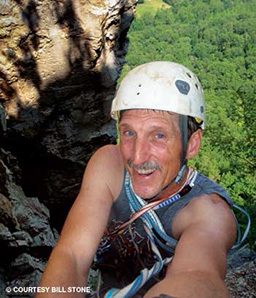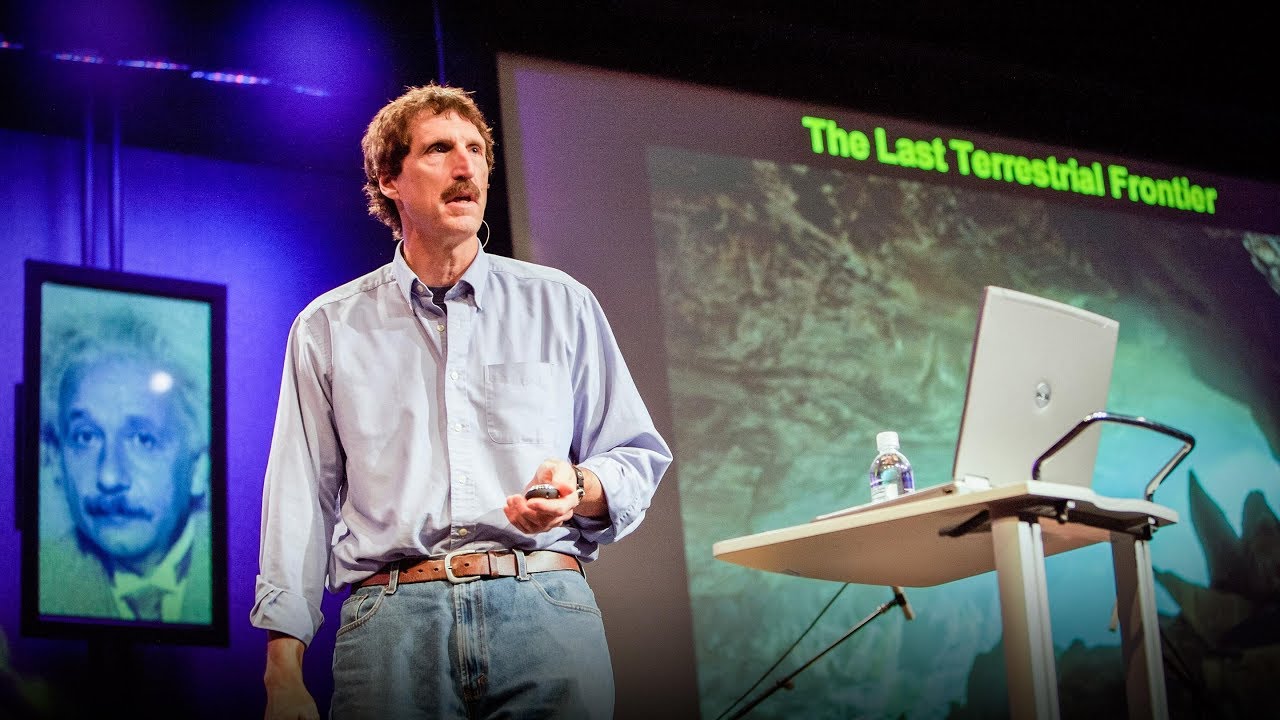
Hometown: Austin, Texas (born in Pittsburgh, Pa.)
Age: 59
Years Diving: 38
Favorite Dive Destination: Wakulla Springs, Fla.
Why I’m a DAN Member: “Affordable diving insurance! Plus, I like the leadership role the organization has taken in dive safety.”
Setting foot where no one has before is difficult in today’s world, but it is a challenge Bill Stone, Ph.D., has met repeatedly. An intrepid technical diver, inventor and explorer, Stone has led notable expeditions to explore the world’s cave systems since the 1980s.
In 1987 he dramatically introduced his Cis-Lunar MK1 rebreather in Wakulla Springs, Fla., by spending 24 consecutive hours underwater. During the expedition Stone also revealed his underwater decompression habitat, which enabled divers to complete decompression obligations in a dry setting.
Stone’s desire for discovery began early in life. He was inspired when John Glenn took flight in 1962 and again as he watched Neil Armstrong and Buzz Aldrin land on the moon in 1969. In 1968, during his sophomore year of high school, Stone joined a caving club and there began to find the balance between academics and adventure. In his freshman year at Rensselaer Polytechnic Institute, he completed the deepest known single descent into a cave in the United States at the time. After being thwarted by a few sumps (submerged areas), Stone learned to dive. Since then he has continued to explore hidden reaches of the earth and develop the tools needed for those explorations.
Stone has developed six generations of rebreather systems, including the Poseidon T60 “Tech Rig” he introduced at Rebreather Forum 3 in Orlando, Fla., in May 2012. During the forum, he announced Poseidon would provide DAN® with access to all Poseidon Discovery MKVI digital dive logs to help establish a global database of rebreather-diving data. “It’s the only way to improve the safety overall for rebreathers,” he said.
Untethered Exploration
In 2007 Stone deployed the Deep Phreatic Thermal Explorer (DEPTHX) to explore and map Mexico’s Sistema Zacatón, a series of hydrothermal springs that includes four cenotes. During the project, DEPTHX used 3-D simultaneous localization and mapping (SLAM) to map the entire system, confirming a maximum depth of more than 1,000 feet. DEPTHX also discovered a chemocline that it decided to follow, found a hydrothermal vent shaft and extracted a core sample from the wall. The sample DEPTHX extracted on that mission revealed four previously unknown divisions of bacteria. DEPTHX was the first of four autonomous robots Stone developed for NASA’s planned expedition to Europa, a moon of Jupiter.
The next version of Stone’s autonomous-exploration design was ENDURANCE (Environmentally Non-Disturbing Under-ice Robotic ANtarctiC Explorer), which was developed to meet the requirements for mapping West Lake Bonney, a subglacial freshwater lake in Antarctica. It mapped the underwater junction between Lake Bonney and the Taylor Glacier and conducted a complete aqueous chemical characterization of the lake. This technology provides scientists with the capability to monitor subglacial areas for indications of climate change.
Oceans of Another World

With funding from NASA, Stone’s company, Stone Aerospace, is now building VALKYRIE (Very-deep Autonomous Laser-powered Kilowatt-class Yo-yoing Robotic Ice Explorer), an autonomous ice-penetrating robot (cryobot) that will play an important role in the lander mission to Europa. Europa’s surface is ice, and most planetary scientists believe the moon is home to a vast subsurface ocean. To melt through miles of ice and access the ocean, VALKYRIE will use a newly designed high-energy optical power transport system, with which photons from a surface-based laser will power the cryobot via cable. In the second phase of testing, scheduled for 2013, Stone will conduct field trials in Alaska and Greenland to analyze VALKYRIE’s independent onboard navigation and obstacle-avoidance systems for ice penetration.
Stone is currently developing the hydrobot VALKYRIE will deploy: ARTEMIS (Autonomous Rover-airborne Radar Transects of the Environment beneath the McMurdo Ice Shelf). It’s scheduled, in 2014, to become the world’s first long-range autonomous vehicle to explore and conduct sophisticated mapping beneath Antarctica’s Ross Ice Shelf. The maps created will be used to calibrate NASA’s equipment for the Europa Flyby Mission, which Stone says will occur between 2018 and 2020. The lander, Stone says, will likely be there by 2030.
The Europa lander will consist of three elements: VALKYRIE, which will bore through the ice and deploy ARTEMIS, which will map Europa’s oceans and deploy the upgraded version of ENDURANCE, which will seek and identify microbial life in Europa’s ocean.
“In NASA-speak, a ‘nominal’ success would be the discovery of novel microbes (bacteria or archaea) hanging around ocean-bottom black-smoker vents. (The biggest trick there will be verifying you did not accidentally bring them with you as contaminants on the vehicle from Earth.) A wilder scenario would be the discovery of macro life in the subsurface ocean. Given the life we just observed at the bottom of 1,000-foot holes drilled into the Ross Ice Shelf, it is completely possible there will be macro life,” Stone said.
Mining the Moon
In 1989 Stone was a semifinalist for the Astronaut Corps but was not selected. “After that I became deeply involved in the efforts by National Institute of Standards and Technology to put an industrial lab into orbit using the shuttle’s external tank as the basis for the lab,” he explained. “It was during that project that we posed the question: How much fuel would it take to reach the moon if we were already in Earth orbit? The answer that came back was: not much. I then looked into the idea of getting sponsors to finance a private lunar mission; it was feasible but not self-sustaining. That got me thinking, in 1992, about how you could design a self-sustaining lunar mission.”
Stone has proposed to lead a bold expedition to the moon’s Shackleton Crater. The intent: to harvest water on the moon, transport it into low-Earth orbit and convert it to liquid-oxygen and liquid-hydrogen propellants, establishing the first celestial fueling station and reducing the cost of interplanetary exploration. In 2007 Stone formed the Shackleton Energy Company, through which he intends to raise $15 billion to fund this expedition. He hopes to have the operation under way by 2015 and to establish sustained, profitable human industry on the moon.
“It’s right; we need it; we, as a human race, need it,” Stone said. “Governments only tend to fund space exploration when there is a need to demonstrate technology, but you can’t think that way if you want to break down the barriers for exploration. The government has done its part; it has broken the boundaries for us. It’s just like the westward expansion: Jefferson dispatched Lewis and Clark to explore the West, but it was the public who established it. It was the Vanderbilts and the Rockefellers. We are at that point.”
Explore More
© Alert Diver — Q4 Fall 2012

